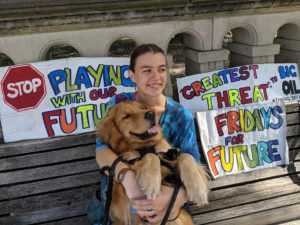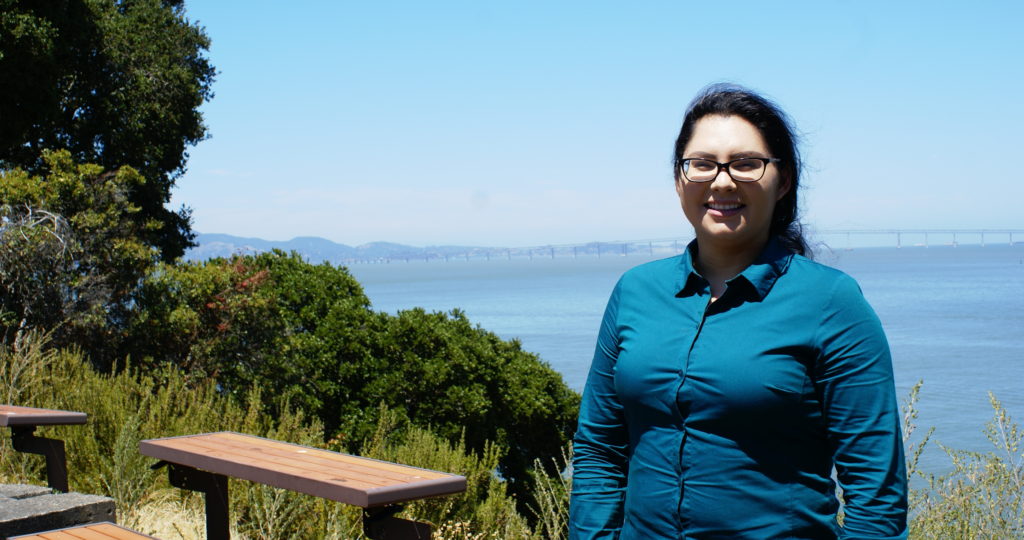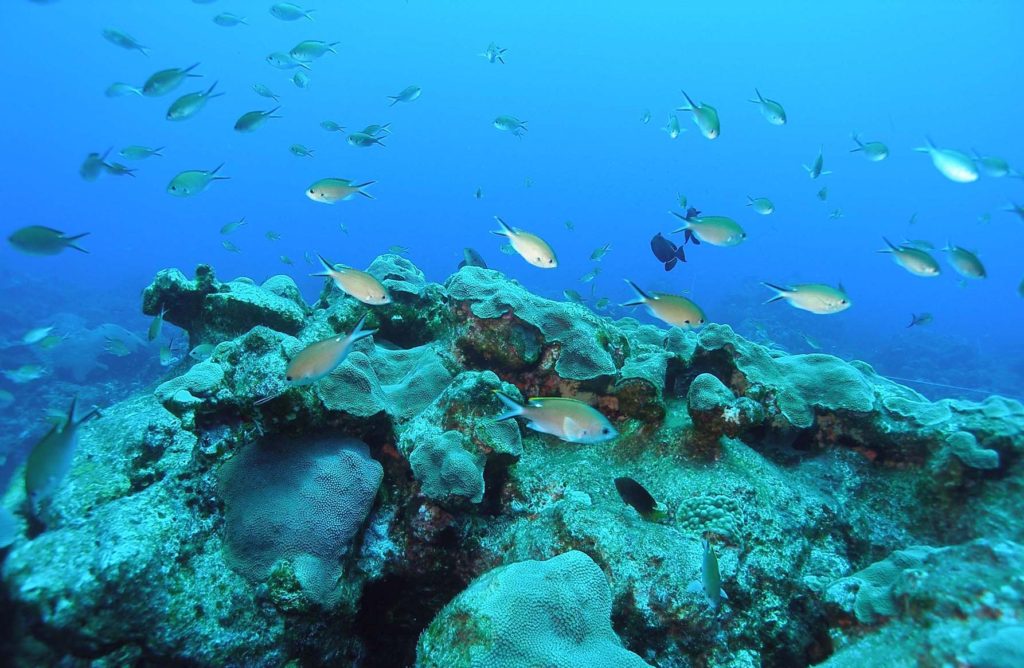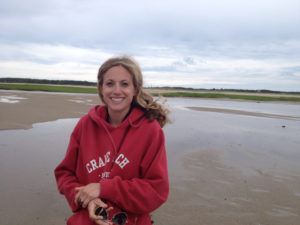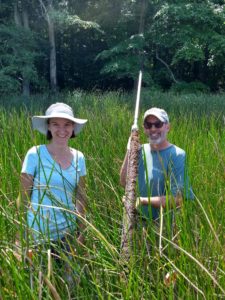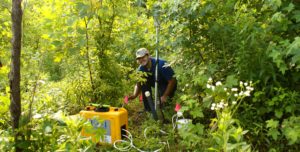by Isabella Eclipse
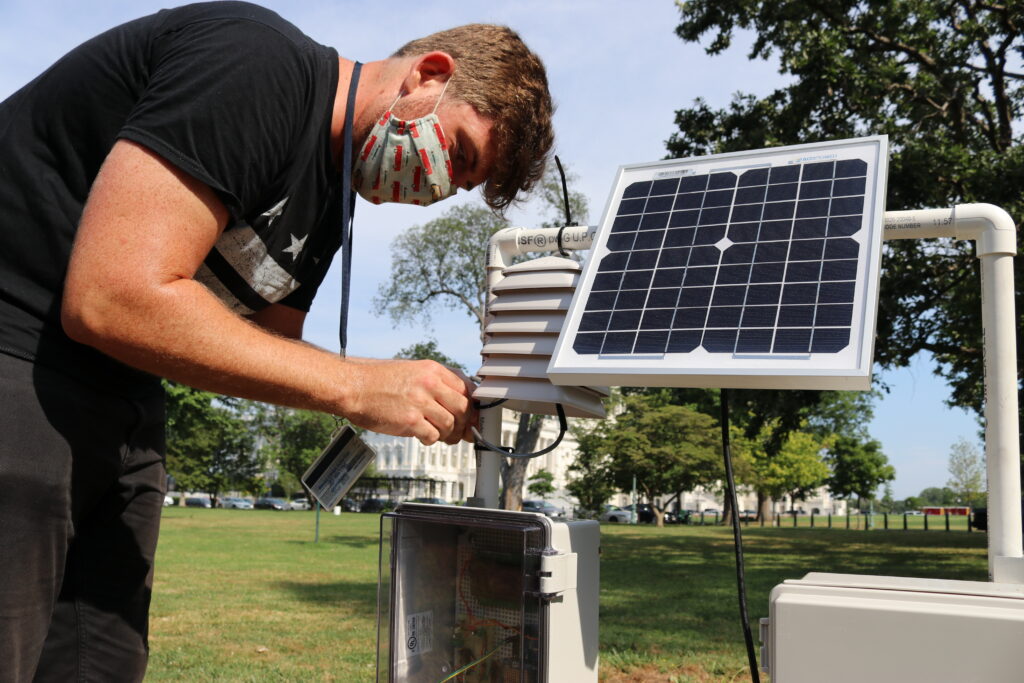
Marc Rosenfield sets up a carbon cycling sensor outside the U.S. Capitol Building. (Credit: Megan Wilkerson)
This is the second in a series of posts highlighting research the Smithsonian Environmental Research Center is continuing to do amid the COVID-19 pandemic, and adaptations its staff have been making in a more socially distant world.
When the pandemic hit, many scientists’ field sites closed down, bringing countless research projects to a screeching halt. Marc Rosenfield, a graduate student at George Washington University, found himself in this exact situation when the Virginia Coast Reserve shut its doors. An ecosystem ecologist, Rosenfield was studying the exchange of carbon between the land and the atmosphere. He’d planned to deploy carbon sensors to understand how carbon exchange differs when moving from marshes to surrounding forests.
Instead of giving up, Rosenfield switched gears and transformed his research into a citizen science project. He, along with his dedicated undergraduate assistant Leona Neftaliem, reached out to colleagues in Washington, D.C., to see if anyone would allow the setup of carbon sensors in their backyards. To his surprise, an overwhelming number said yes. Soon, strangers were asking him to set up sensors on their properties. Today, Rosenfield has 30 sensors in locations across D.C., from private backyards to the U.S. Botanic Garden. There’s even one at the famous 9:30 nightclub.


